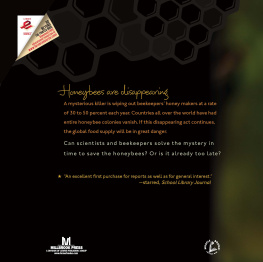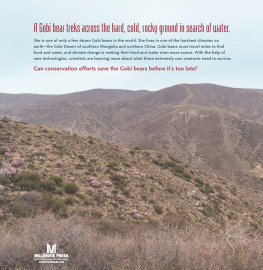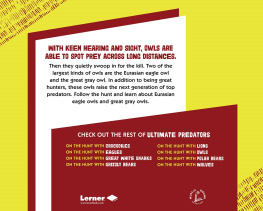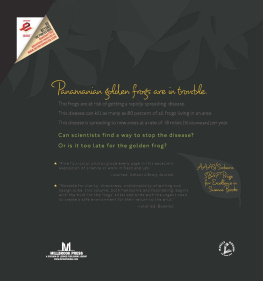DartangnonITCStd
JohnstonITCStd-Light
JohnstonITCStd-Medium
DartangnonITCStd
JohnstonITCStd-Light
JohnstonITCStd-Medium
DartangnonITCStd
JohnstonITCStd-Light
JohnstonITCStd-Medium
DartangnonITCStd
JohnstonITCStd-Light
JohnstonITCStd-Medium
For Curious Children
Everywhere!
Acknowledgments: The author would like to thank the following people for taking the time to share
their expertise: Dr. May Berenbaum, Professor and Head of Entomology Department, University of
Illinois at UrbanaChampaign; Dr. R. W. (Rob) Currie, Professor and Head of Entomology Department,
University of Manitoba; Dr. Gloria DeGrandi-Hoffman, Research Leader, United States Department
of Agriculture, Agricultural Research Service, Carl Hayden Bee Research Center; Dr. Keith Delaplane,
Professor and Program Director, College of Agricultural & Environmental Sciences, University of
Georgia; Dr. John Hafernik, Professor, Department of Biology, San Francisco State; David Hackenberg;
Randy Oliver; Susan Olson; Dr. Jeffery Pettis, Bee Research Leader, United States Department of
AgricultureAgricultural Research Service; and Dr. Marla Spivak, Professor, University of Minnesota.
A special thank-you to Skip Jeffery for his loving support during the creative process.
Text Copyright 2014 by Sandra Markle
All rights reserved. International copyright secured. No part of this book may be reproduced, stored in
a retrieval system, or transmitted in any form or by any meanselectronic, mechanical, photocopying,
recording, or otherwisewithout the prior written permission of Lerner Publishing Group, Inc., except for
the inclusion of brief quotations in an acknowledged review.
Main body text set in Johnston ITC Std. 14/21.
Typeface provided by International Typeface Corp.
Millbrook Press
A division of Lerner Publishing Group, Inc.
241 First Avenue North
Minneapolis, MN 55401 USA
For reading levels and more information, look up this title at www.lernerbooks.com.
Library of Congress Cataloging-in-Publication Data
Markle, Sandra.
The case of the vanishing honeybees : a scientific mystery / by Sandra Markle.
p. cm
Includes index.
ISBN 9781467705929 (lib. bdg. : alk. paper)
ISBN 9781467717007 (eBook)
ISBN 9781467759267 (Audisee ISBN)
1. HoneybeeHealthJuvenile literature. 2. HoneybeeJuvenile literature. I. Title.
SF538.M37 2014
595.799dc23 2012046913
Manufactured in the United States of America
3 PC 10/1/14
DartangnonITCStd
JohnstonITCStd-Light
JohnstonITCStd-Medium
Table of
Contents
DartangnonITCStd
JohnstonITCStd-Light
JohnstonITCStd-Medium
Its a Mystery
On a warm day in October 2006, Dave Hackenberg
went to check on his workers.
Hackenberg is a beekeeper, and
his workers are millions of honeybees.
As he walked among a group of nearly
four hundred beehives, he expected
to see the air full of bees. It wasnt.
Curious, Hackenberg lifted the cover
of one hive and peeked inside. Three
weeks earlier, when he drove this
group of beehives to Florida from
Pennsylvania, each hive was home to
about thirty thousand bees. Now he
found only the bee colonys egg-laying
queen and her brood (developing
young) inside the hive. Thousands of
worker bees were missing.
Dave Hackenberg
checks on a few of
his 3,200 beehives.
DartangnonITCStd
JohnstonITCStd-Light
JohnstonITCStd-Medium
Worried, Hackenberg checked dozens more hives. He discovered they
were nearly empty too. But there werent any dead bees to be found inside
the hives or on the ground around the hives. In his fifty years as a beekeeper,
Hackenberg had never seen anything quite like this.
What had happened to all the bees?
This is a section of
a beehive after the
workers disappeared
and the untended
brood died.
DartangnonITCStd
JohnstonITCStd-Light
JohnstonITCStd-Medium
If Honeybees
Are in Trouble,
Were in Trouble!
Having insects such as honeybees vanish may not
seem like a big deal, but it is. Without honeybees, you could be
limited to eating oats, rice, and corn. These foods come from plants that
use wind to move their pollen (male reproductive cells) to their ovules
(female reproductive cells). The process of transferring pollen is called
pollination. It has to happen for a plant to produce seeds, parts that contain
an embryo, or baby plant. Thats how the plant produces more of its own
kind of plant. The
wind pollinates some
plants. But birds, bats,
and insects, especially
bees, pollinate many
more. Honeybees, in
particular, are needed
in order to grow
apples, raspberries,
watermelon, almonds,
and cucumbersto
name just a few.
These are some of the
foods you can enjoy
thanks to honeybees.
DartangnonITCStd
JohnstonITCStd-Light
JohnstonITCStd-Medium
pollen (male
reproductive cells)
Apple Blossom
Honeybees depend
on plants just as plants
depend on bees.
Many plants produce
nectar, a sweet liquid,
to attract bees and
other pollinators. Bees
gather this liquid as
food. The nectars scent
attracts bees to a plant.
Many flowers are also
colored to signal that
they contain nectar. The flowers are shaped to make
sure that visiting honeybees will spread pollen in
return for the food.
To reach nectar, a worker bee usually has to burrow
into a flower. The bee brushes past the flowers male
parts, where it collects pollen, and the female parts,
containing the plants ovules. The bee picks up pollen
this way and also drops off a little pollen, often from another
flower. To form a seed, the ovules and the pollen must be from the
same kind of plant. Fortunately, honeybees tend to visit only one kind
of plant during a nectar-collecting flight. And each flower produces
just a few drops of nectar a day. So during each flight, a bee visits as
many as four hundred flowers. Thats a lot of pollination!
male
parts
ovules
(female reproductive cells























